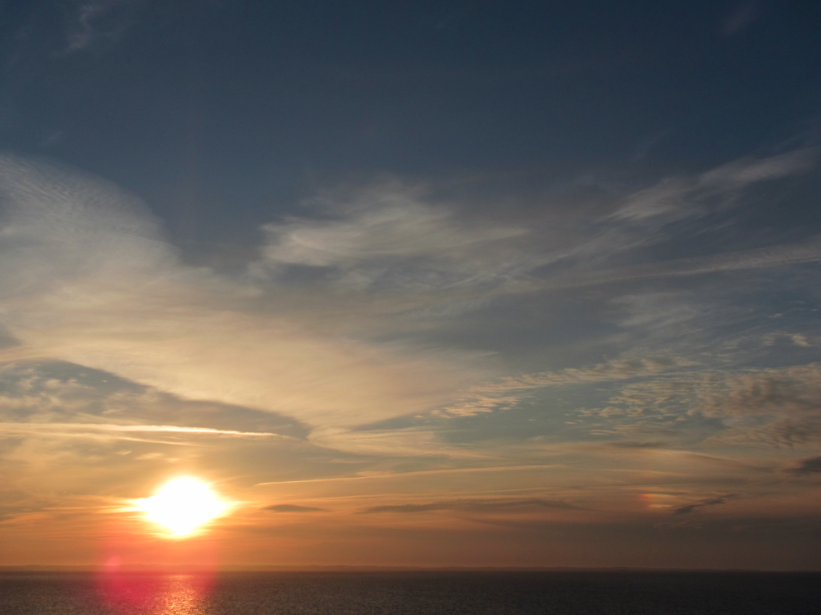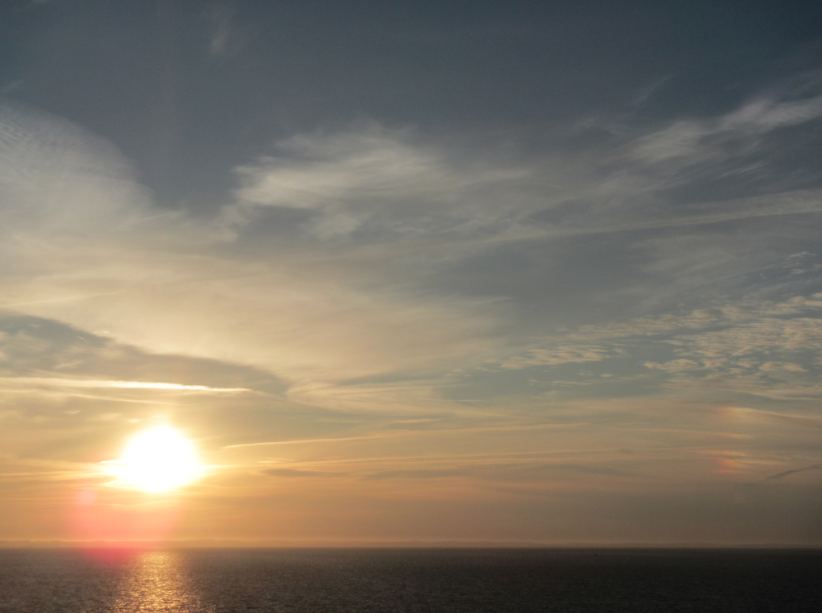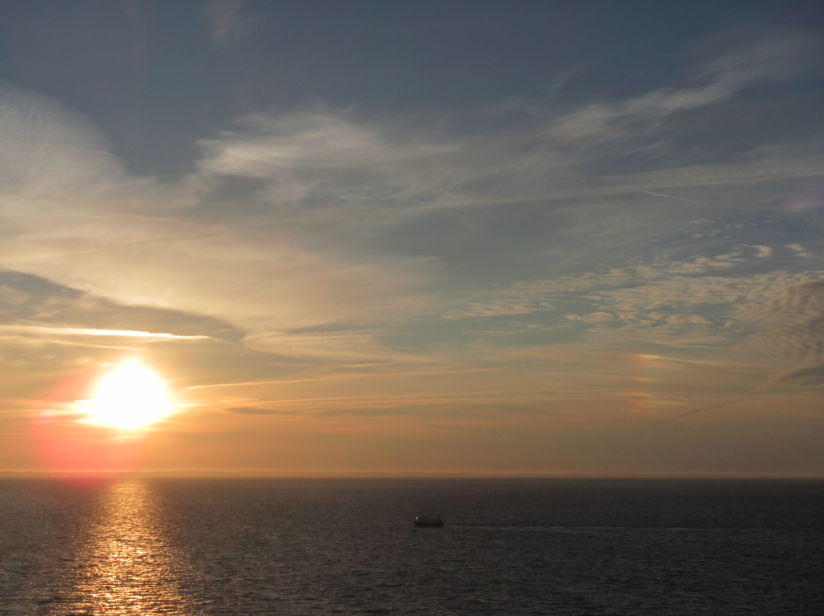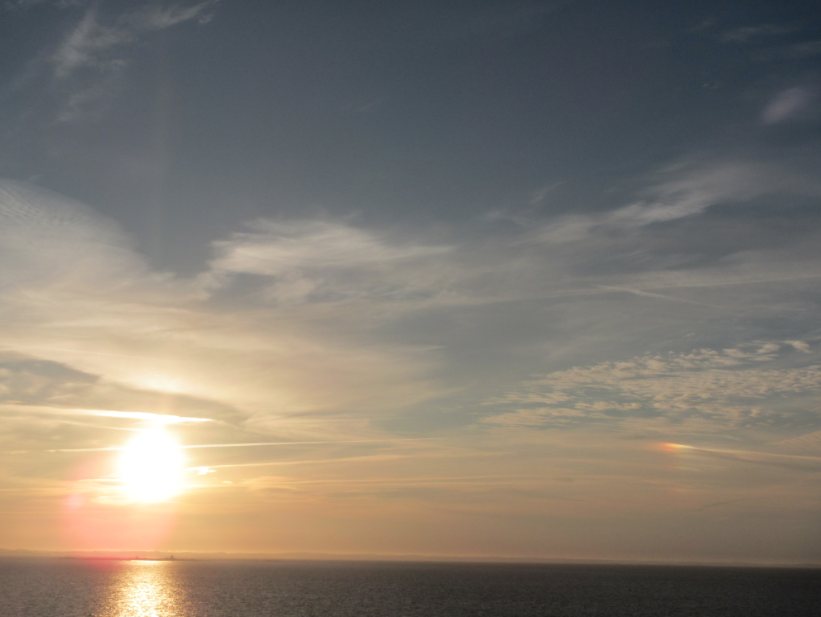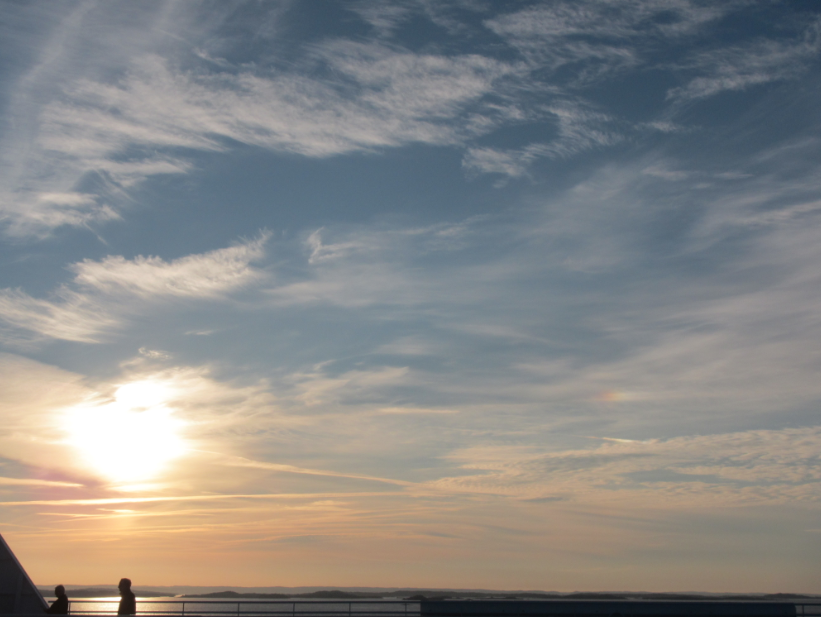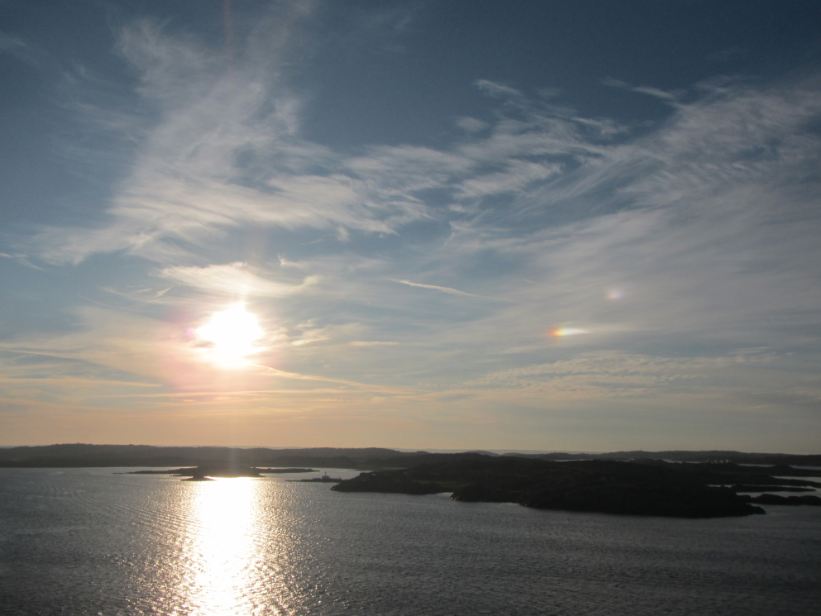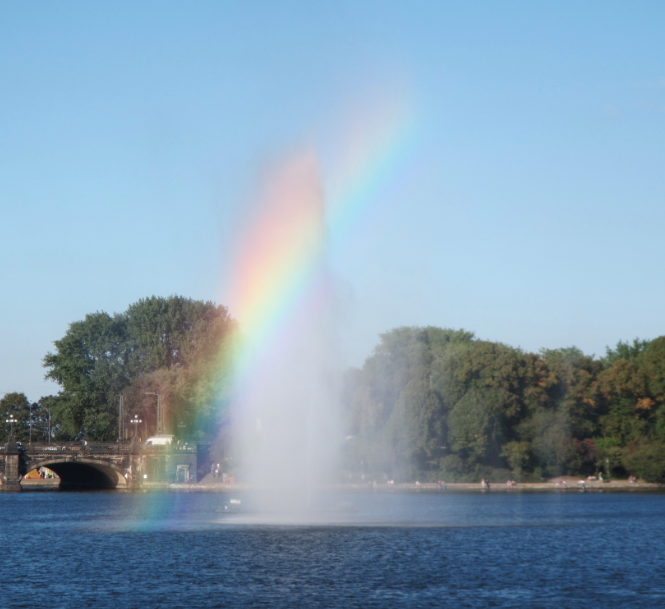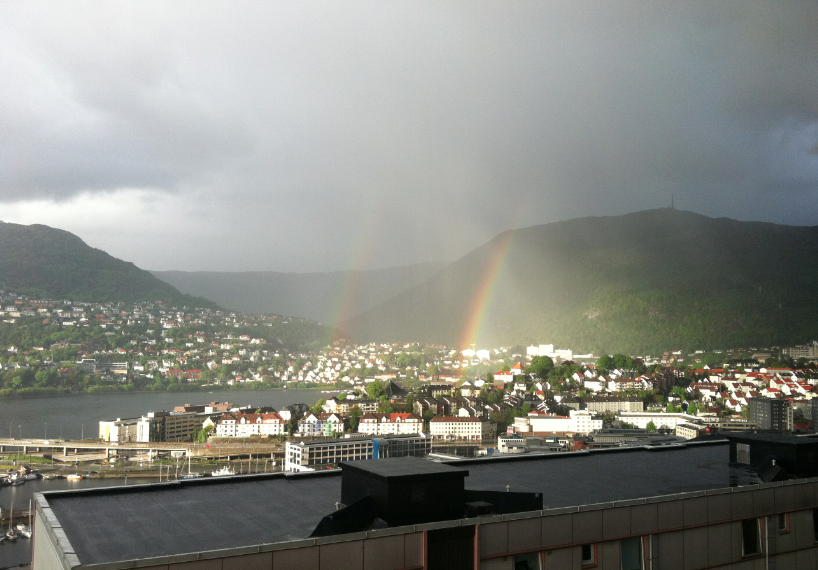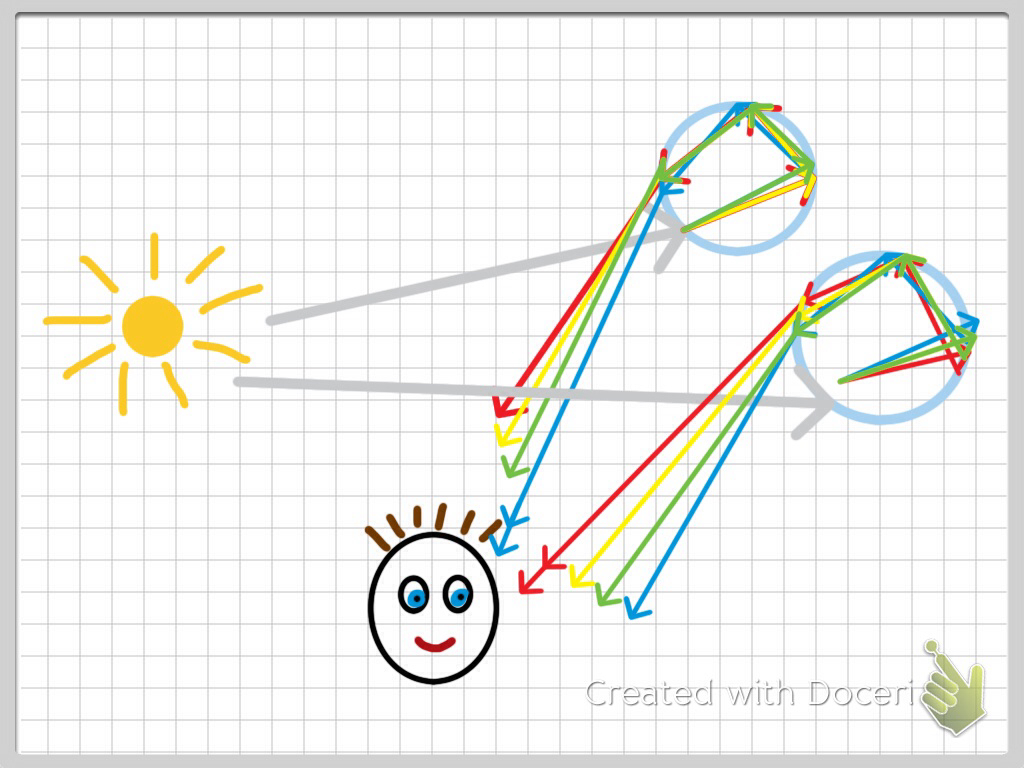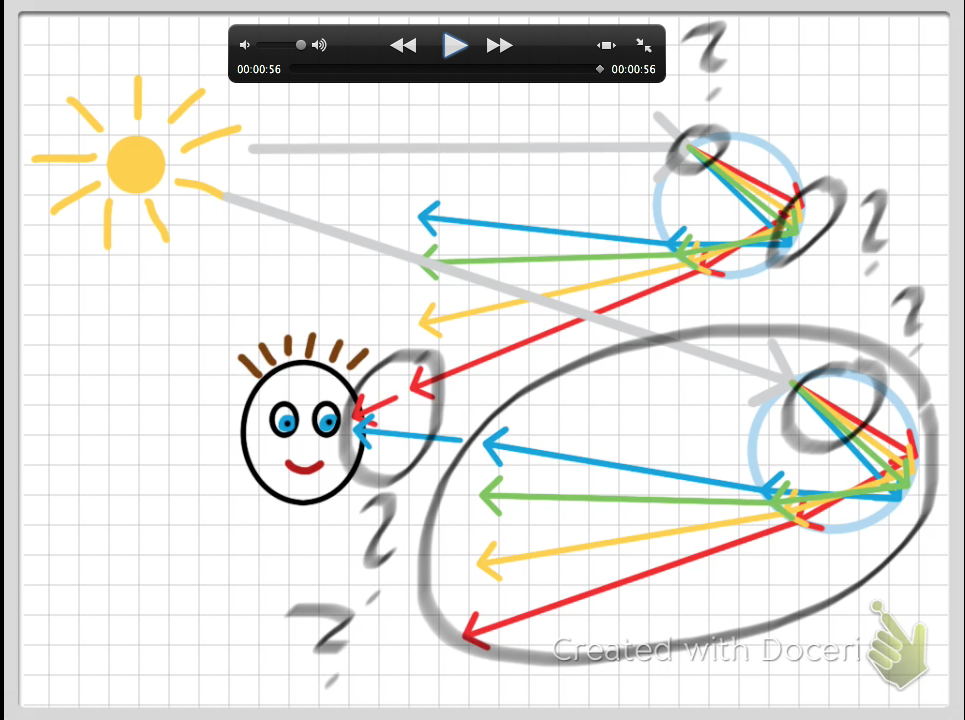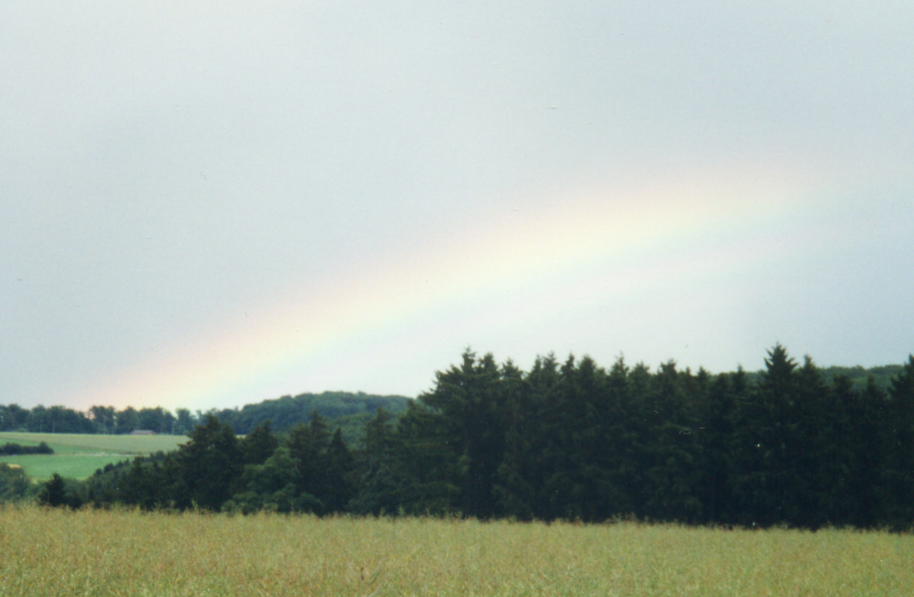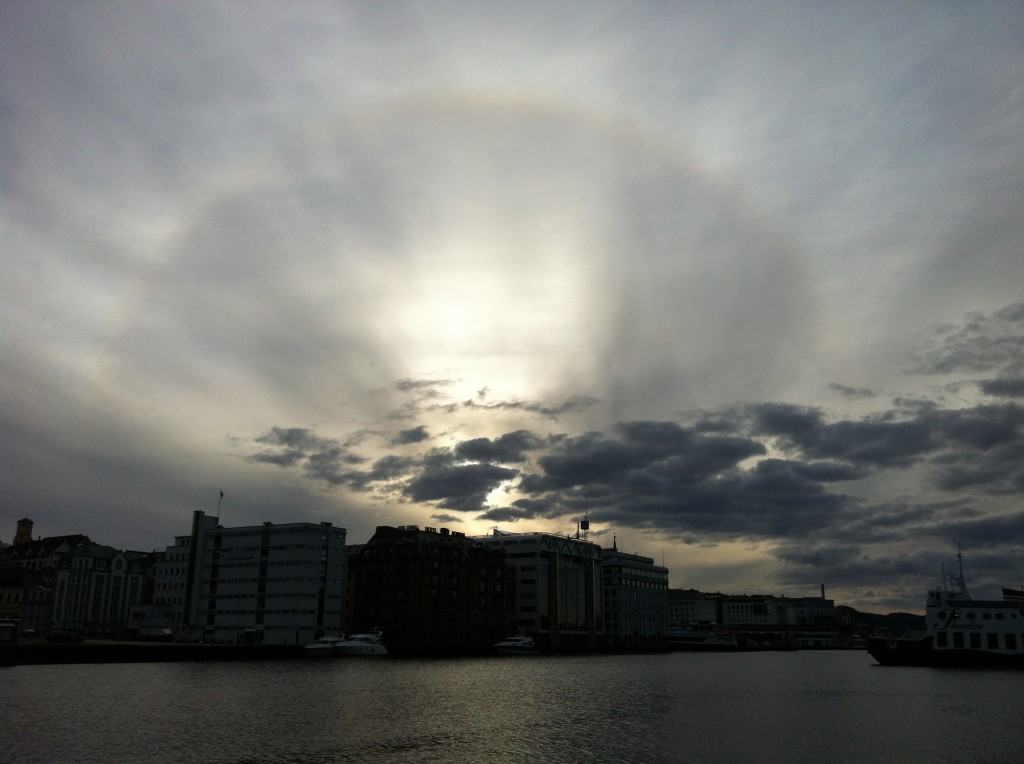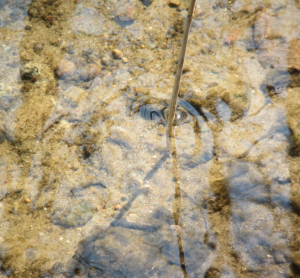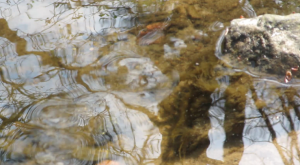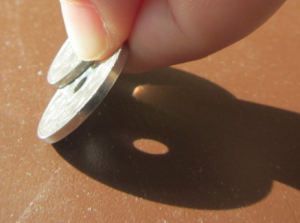More refraction of light.
Recently I found myself on the ferry from Kiel to Gothenburg, watching the sun rise.
Next to the sun, I noticed a piece of a rainbow.
Now as we all know, rainbows are supposed to only be visible when we are facing away from the sun. Clearly not the case here.
By the way, I’m talking about the rainbow-y thingy to the right of the sun, the spec close to the sun is probably something on the lens of my camera, or some other artefact of some sort.
So I read up on the rainbow-y thingy, and apparently it is called a sun dog.
There are supposed to be two of those, on either side of the sun.
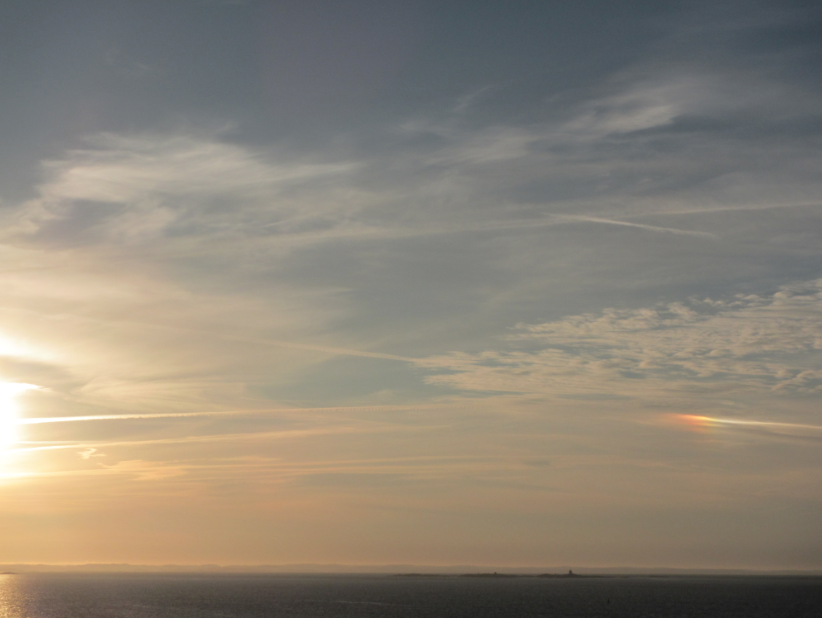 Do you know those medieval pictures of three suns, with the outer two facing the inner one? Apparently those are supposed to be sun dogs! I never knew.
Do you know those medieval pictures of three suns, with the outer two facing the inner one? Apparently those are supposed to be sun dogs! I never knew.
Anyway, I stood, fascinatedly watching the rainbow-y thingy.
Occasionally distracted by cool ships.
 The higher the sun rose, the more colorful the rainbow-y thingy became. While it had been colorful for the naked eye (ok, I’m wearing glasses, but you know what I mean. No filters or polarization or anything), it started to show up on pictures, too.
The higher the sun rose, the more colorful the rainbow-y thingy became. While it had been colorful for the naked eye (ok, I’m wearing glasses, but you know what I mean. No filters or polarization or anything), it started to show up on pictures, too.
In the beginning I tried finding the second sun dog on the left of the sun, but there was nothing. But the one on the right got prettier and prettier!
Eventually we arrived in the port of Gothenburg and I got distracted by container terminals and other exciting things that you will surely hear about very soon.
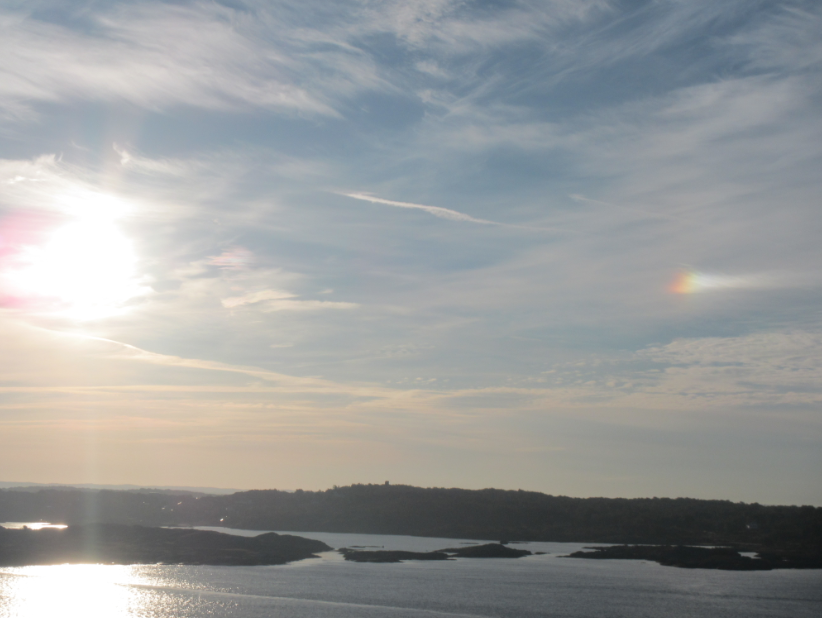 But for now I’ll leave you with this amazing view of the little islands right before you enter Gothenburg. Ready for a Scandinavian holiday? :-)
But for now I’ll leave you with this amazing view of the little islands right before you enter Gothenburg. Ready for a Scandinavian holiday? :-)

